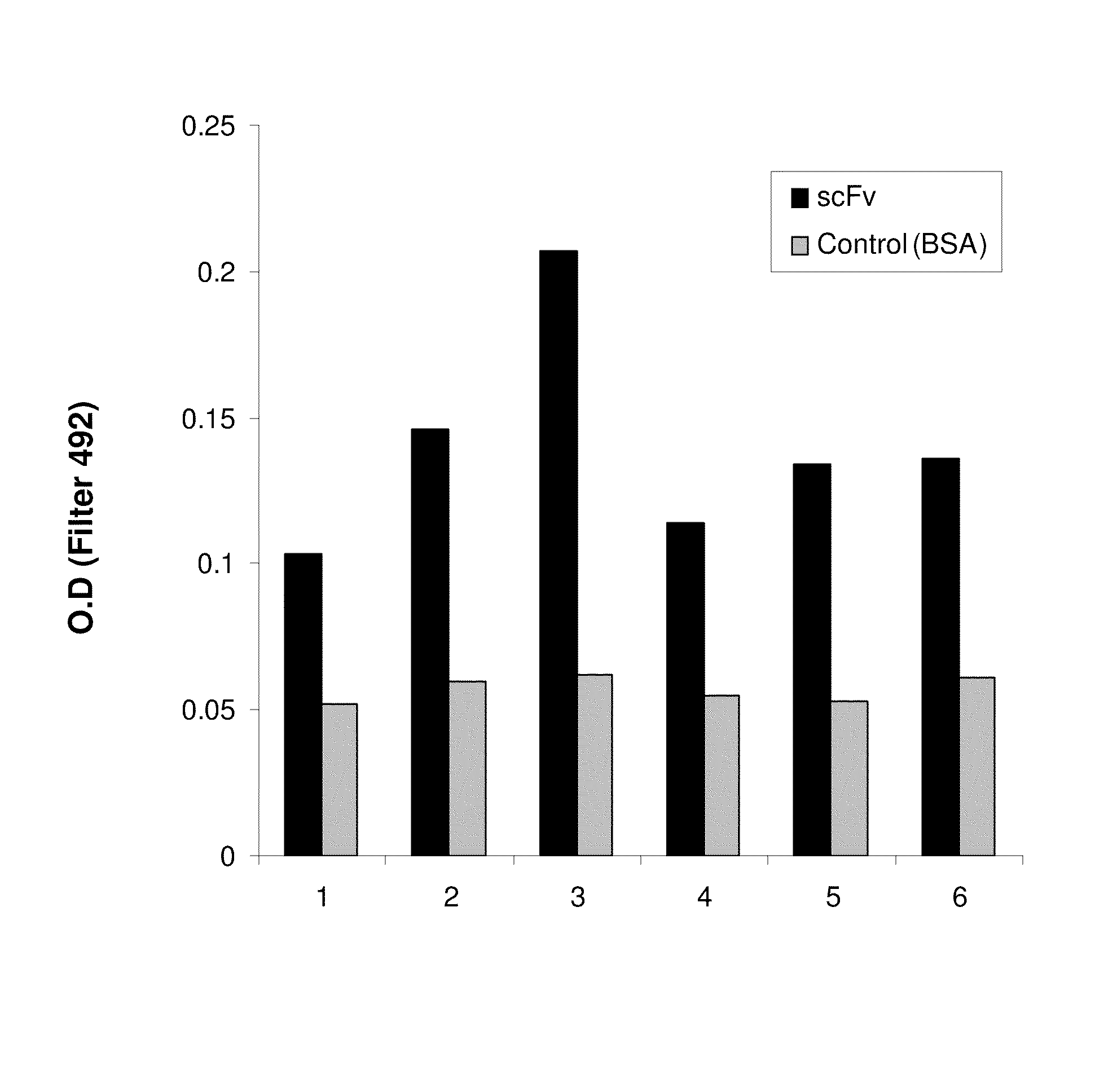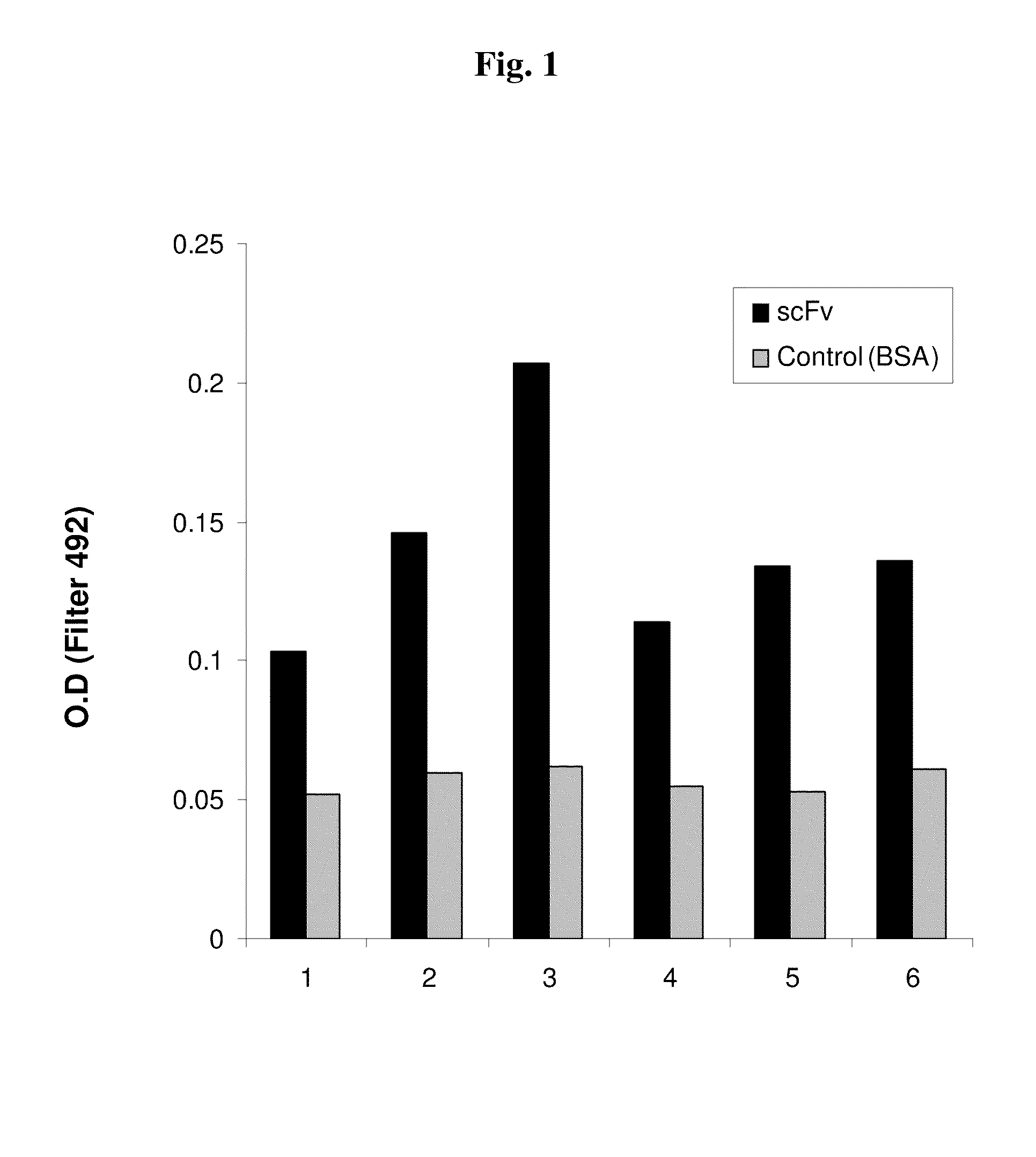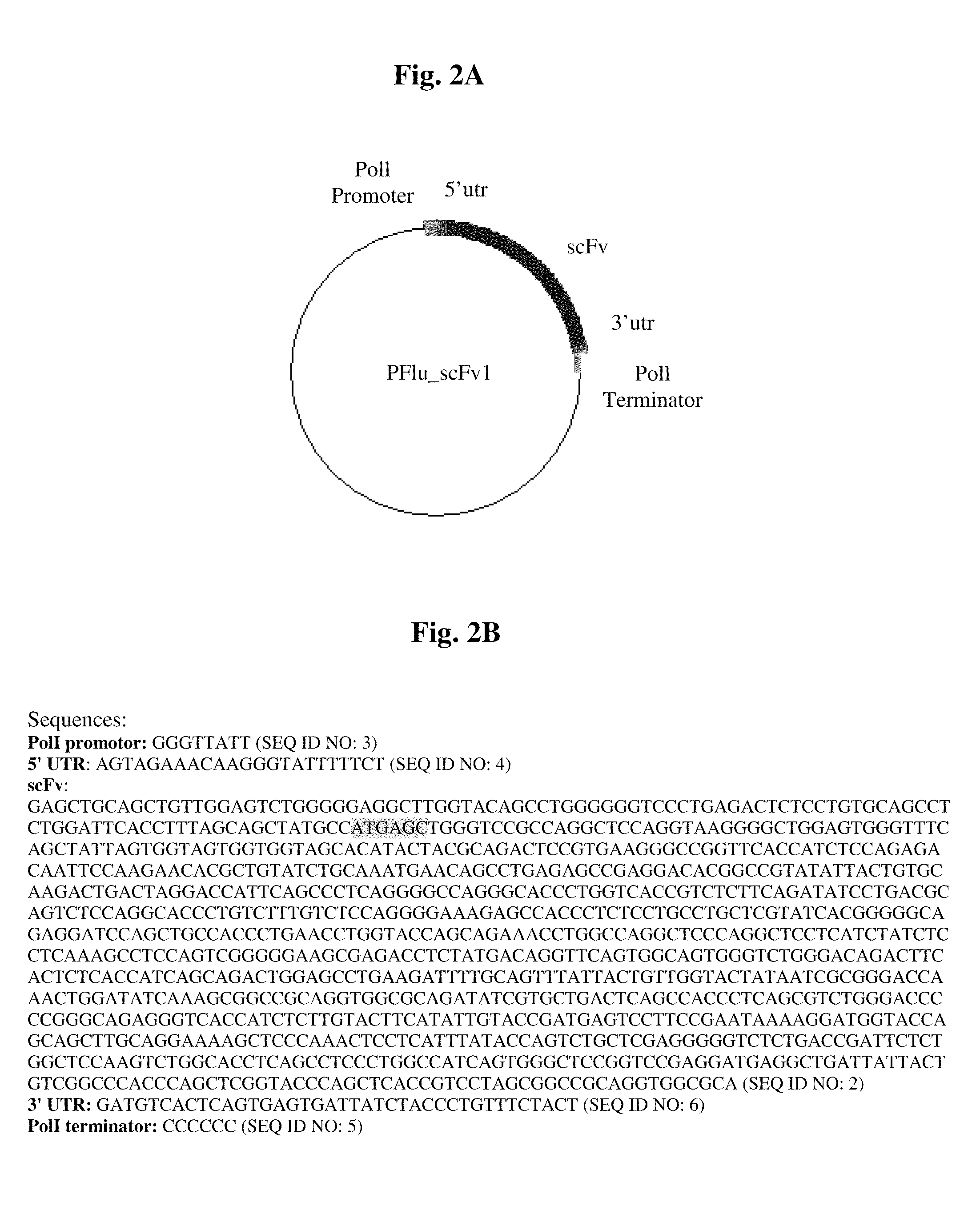Virus-like particles for treatment of viral infections
a virus and virus-like technology, applied in the field of virus-like particles for treatment of viral infections, can solve the problems of inability to correct mistakes introduced into copied polynucleotides, lack of cellular machinery for self-reproduction of viruses,
- Summary
- Abstract
- Description
- Claims
- Application Information
AI Technical Summary
Benefits of technology
Problems solved by technology
Method used
Image
Examples
example 1
Selection of scFv Antibodies Specific for an Influenza A Non-Structural Protein
[0064]We used antibody phage display library (disclosed in Azriel-Rozenberg et al. 2004 and kindly provided by Dr Benhar, Tel Aviv University, Israel) for isolating scFvs against the influenza virus. In short, Benhar's group prepared the scFv repertoire comprising the library by amplification of antibody genes by PCR using human spleen, lymph node and peripheral blood lymphocyte cDNA as a template as described in Azriel-Rozenfeld et al. (2004). In this library, the repertoire of antibody (or scFv) genes is fused to the p3 gene of the m13 filamentous phage, and the fusion protein is then displayed on the phage surface.
[0065]In principle, to select for a specific antibody the antigen of interest is attached to magnetic beads and the phages expressing scFv on their surface are contacted with the beads. Phages binding specifically to the beads are isolated, used to transfect bacteria, and used in additional...
example 2
Generation of Influenza A Viral Particles from Cloned cDNA
[0070]We have established a unique delivery system, which use the same virus that we want to inhibit as a vehicle to deliver the scFv. Our first “candidate” for inhibition is the Influenza A virus, hence the viral vector is based on the Influenza and prepared by reverse-genetics method.
[0071]We used a reverse-genetics system that allows us to efficiently generate influenza A viruses entirely from cloned cDNAs. Human embryonic kidney cells
[0072](293T) were co-transfected with nine expression vectors, each encoding a viral protein of the H1N1 strain (A / WSN / 33) of influenza virus, as described in Neumann et al. (1999), and one plasmid encoding for the scFv. The nine expression vectors were obtained from Dr Kawaoka, Department of Pathobiological Sciences, School of Veterinary Medicine, University of Madison-Wisconsin, Wis., USA. Briefly, the cDNA of the viral genes were cloned into the plasmids operably linked to the RNA polymer...
example 3
Inhibition of Wild Type Influenza A Viral Replication in Cells Expressing scFv Specific for an Essential Non-Structural Viral Protein
[0077]To test if the scFv expressed inside the infected cell inhibits the activity of the viral RDRP, the recombinant virus-like particles were mixed with a quantity of wild type virus that would produce a cytopathic effect in 50% of the cell cultures inoculated with the virus (TCID50). We infected 293T cells with the mixture of wild type virus nad virus-like particles or with wild type virus alone (control) by incubating the cells with the viruses and virus-like particles in 96 well plates at 37° C., 5% CO2, for 3 days. Visual examination of cytopathic effect showed inhibition of viral propagation in cell cultures infected with the viruses and virus-like particle mixture as compared to the control.
PUM
| Property | Measurement | Unit |
|---|---|---|
| size | aaaaa | aaaaa |
| size | aaaaa | aaaaa |
| particle size | aaaaa | aaaaa |
Abstract
Description
Claims
Application Information
 Login to View More
Login to View More - R&D
- Intellectual Property
- Life Sciences
- Materials
- Tech Scout
- Unparalleled Data Quality
- Higher Quality Content
- 60% Fewer Hallucinations
Browse by: Latest US Patents, China's latest patents, Technical Efficacy Thesaurus, Application Domain, Technology Topic, Popular Technical Reports.
© 2025 PatSnap. All rights reserved.Legal|Privacy policy|Modern Slavery Act Transparency Statement|Sitemap|About US| Contact US: help@patsnap.com



